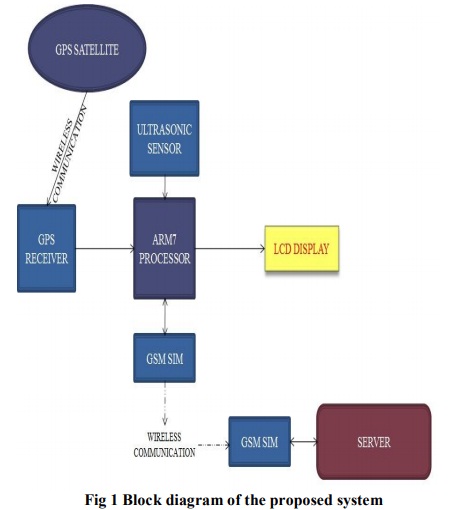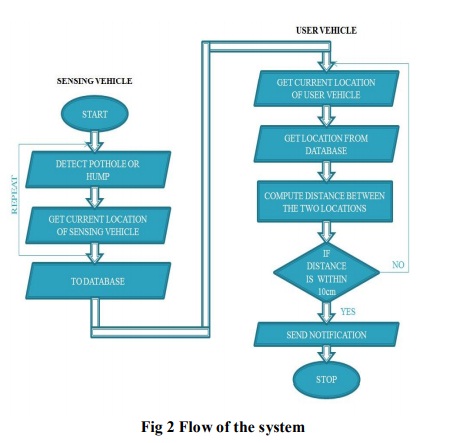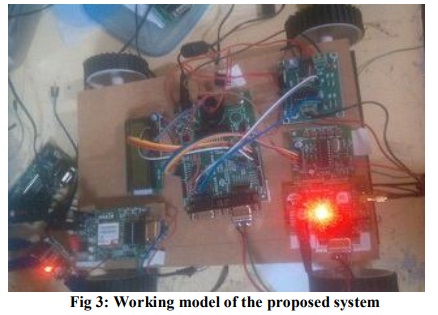





Published on Nov 30, 2023
Roads make up to the majority of means of transportation used as of today in India. Regular maintenance of these roads is important as they are filled with unexpected hurdles such as potholes and humps. These hurdles cause vehicle damage and also have caused a number of accidents in the past that make up to a considerable amount and should be given a thought about. This paper proposes a cost-effective solution that provides timely alerts to the drivers regarding potholes or humps. The proposed system can be divided into three sub-units: the sensing sub-unit, the server sub-unit and the user subunit. At the sensing sub-unit, an ultrasonic sensor is used to detect potholes and humps, whose location co-ordinates are retrieved by the GPS receiver. This data is stored to the database, which is the sever sub-unit. At the user sub-unit a hardware module is set-up that provides timely alerts to the drivers regarding potholes and humps.
India is considered one of the fastest developing countries as of today. India's road network is gigantic, giving it a thought about the condition of the roads. Roads indirectly contribute to the economic growth of the country and it is extremely essential that the roads are well built and strong. India is home to several bad roads be it the metropolitans, the cities or the villages. Since India is a developing nation there is a constant demand for good quality infrastructure, transportation and services. But since India is a huge country with quite a sizable population this problem still has not been addressed in totality. Over the past few years, there has been a large increase in vehicle population. This increase in vehicle population has led to increasing road accidents and also traffic congestion. According to Global Road Safety Report, 2015 released by the World Health Organization (WHO), India accounts for more than 200,000 deaths because of road accidents. These accidents can be due to overspeeding, drunk and driving, jumping traffic signals and also due to humps, speed-breakers and potholes.
Hence it is important to collect information regarding these poor road conditions and distribute the same to other vehicles that in turn help reduce accidents caused due to potholes and humps . Roads are normally placed with speed breakers that are used to control the speed of the vehicle. But these speed breakers have been a cause of accidents because a definite dimension is not followed throughout. Likewise, potholes are formed due to oil spills, heavy rains and also due to movement of heavy vehicles. These bad road conditions cause accidents, affect the quality of driving and also consumes more fuel.
Hence, in this paper we have proposed a system that would notify the drivers regarding any hurdles such as potholes and humps and this information can be used by the Government to correct these roads effectively.
This proposed system of detection and notification of potholes and humps to the drivers is a cost effective solution.
ARM is a 32-bit processor that uses RISC architecture and is generally faster than other controllers. Since RISC architecture is used it consumes less power, has reduced heat and is also low cost. ARM is the main component in the proposed system as it is responsible for various tasks such as processing the information received by the sensors, sending this information to the server and also receiving alerts.

Ultrasonic sensors are based on measuring the properties of sound waves with frequency above the human audible range. The HC-SR04 module includes ultrasonic transmitter, receiver and control circuit. It is used to measure distance between two objects and this distance is calculated based on the time taken by the ultrasonic pulse to travel a particular distance. The module automatically sends a 40kHz square wave and automatically detect the received pulse signal. The distance is calculated based on the time taken by the transmitted signal to return.
GPS receiver is a constellation of 27 earth orbiting satellites. It is a satellite navigation system and is used to capture the geographical location. The receiver can figure out how far the signal has travelled by timing how long it took the signal to arrive. It is maintained by US government and is freely available to anyone with GPS receiver.
This GSM is a highly flexible plug and play quad band for direct and easy integration to RS232 applications. It can be used in GPRS mode to connect to internet and do many applications for data logging and control. In the GPRS mode we can also connect to any remote FTP server and upload files for data logging. This GSM SIM is responsible for sending the sensed data to the server and also in retrieving the information from the server for notifications.
Liquid Crystal Display screen is an electronic display module. A 16x2 means it can display 16 characters per line and there are 2 such lines. In this LCD each character is displayed in 5x7 pixel matrix This is used to display notifications regarding the humps and potholes on roads and alert the driver
The architecture of proposed system consists of 3 parts: sensing unit, server unit and user unit as shown in figure 1. Sensing unit: This module consists of ARM processor (LPC2148), GPS receiver, ultrasonic sensor (HC-SR04) and GSM SIM 900 modem. The distance between the car body and the road is measured using an ultrasonic sensor. A threshold value is set such that the value depends on ground clearance of the vehicle. The measured distance is compared with the threshold value to detect pothole or hump. If the measured distance is greater when compared with the threshold value, then it is classified to be a pothole, and if the measured distance is less, then it is classified to be a hump. The location co-ordinates retrieved by the GPS receiver, along with this data the information regarding the detected pothole or hump at a particular location co-ordinate is transmitted to the server using a GSM modem.
The server unit is nothing but the database. It is an intermediate layer between sensing and user units. Its function is to store the information received by the sensing unit and provide the same to the user unit when requested. This unit can also be updated regularly for accurate information regarding the potholes and humps. User unit: The user unit is responsible for providing alerts regarding the potholes or humps on roads at a particular given location. The GPS receiver is constantly receiving information regarding its location co-ordinates, using this information the database is checked for any data around the given location co-ordinates. Any data found, it is received by the ARM processor from the database through the GSM modem and the same is displayed on the LCD display in the user vehicle. A LED light is used in two-wheelers to provide the alerts. The alert is displayed 100 meters before the pothole or hump appears.

The working of our proposed system was tested in simulated environment in which the demo model is created which consist of artificial humps as well as pothole and shown in figure 3. The test was divided into two parts: 1. Detection of humps and potholes and this information was recorded and later was stored in the database. 2. Based on the detection of humps and potholes, the alerts were sent from the stored information in the database. For demo purpose, ARM7 (microcontroller) is fixed on a car and the threshold value of the car is measured. The ARM7 module worked the same way as expected to detect the humps and potholes and this information was sent to the database successfully, from the database the alert was sent to the user notifying about the humps and potholes.

The proposed system basically serves two purposes; it automatically detects the potholes and humps and sends the information regarding this to the vehicle drivers, so that they can avoid accidents. This is a cost efficient solution for detection of humps and potholes. This system is effective even in rainy season when roads are flooded with rain water as well as in winter during low visibility, as the alerts are sent from the stored information in the server/database. This system helps us to avoid dreadful potholes and humps and hence to avoid any tragic accidents due to bad road conditions. The information can also be used by the Government authorities for the maintenance of the roads. The proposed system can be further improved to display alerts such as ‘Bad road ahead’ in order to help the driver be more alert while driving/riding on such roads.
[1] Rajeshwari Madli, Santosh Hebbar, Praveenraj Pattar, and Varaprasad Golla, “Automatic Detection and Notification of Potholes and Humps on Roads to Aid Drivers”, IEEE Sensors J., Vol. 15, No. 8, August 2015.
[2] H. Youquan, W. Jian, Q. Hanxing, Z. Wei, and X. Jianfang, “A research of pavement potholes detection based on three-dimensional projection transformation,” in Proc. 4th Int. Congr. Image Signal Process (CISP), Oct. 2011, pp. 1805–1808.
[3] J. Lin and Y. Liu, “Potholes detection based on SVM in the pavement distress image,” in Proc. 9th Int. Symp. Distrib. Comput. Appl. Bus. Eng. Sci., Aug. 2010, pp. 544– 547
[4] I. Moazzam, K. Kamal, S. Mathavan, S. Usman, and M. Rahman, “Metrology and visualization of potholes using the microsoft Kinect sensor,” in Proc. 16th Int. IEEE Conf. Intell. Transp. Syst., Oct. 2013, pp. 1284–1291